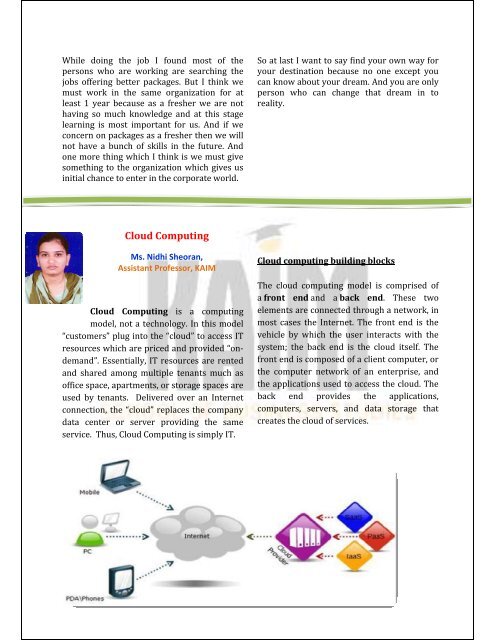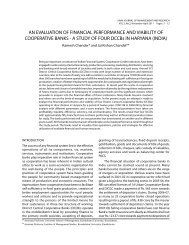Newsletter August 2012 - KAIM India School of Management
Newsletter August 2012 - KAIM India School of Management
Newsletter August 2012 - KAIM India School of Management
Create successful ePaper yourself
Turn your PDF publications into a flip-book with our unique Google optimized e-Paper software.
While doing the job I found most <strong>of</strong> the<br />
persons who are working are searching the<br />
jobs <strong>of</strong>fering better packages. But I think we<br />
must work in the same organization for at<br />
least 1 year because as a fresher we are not<br />
having so much knowledge and at this stage<br />
learning is most important for us. And if we<br />
concern on packages as a fresher then we will<br />
not have a bunch <strong>of</strong> skills in the future. And<br />
one more thing which I think is we must give<br />
something to the organization which gives us<br />
initial chance to enter in the corporate world.<br />
So at last I want to say find your own way for<br />
your destination because no one except you<br />
can know about your dream. And you are only<br />
person who can change that dream in to<br />
reality.<br />
Cloud Computing<br />
Ms. Nidhi Sheoran,<br />
Assistant Pr<strong>of</strong>essor, <strong>KAIM</strong><br />
Cloud Computing is a computing<br />
model, not a technology. In this model<br />
“customers” plug into the “cloud” to access IT<br />
resources which are priced and provided “ondemand”.<br />
Essentially, IT resources are rented<br />
and shared among multiple tenants much as<br />
<strong>of</strong>fice space, apartments, or storage spaces are<br />
used by tenants. Delivered over an Internet<br />
connection, the “cloud” replaces the company<br />
data center or server providing the same<br />
service. Thus, Cloud Computing is simply IT.<br />
Cloud computing building blocks<br />
The cloud computing model is comprised <strong>of</strong><br />
a front end and a back end. These two<br />
elements are connected through a network, in<br />
most cases the Internet. The front end is the<br />
vehicle by which the user interacts with the<br />
system; the back end is the cloud itself. The<br />
front end is composed <strong>of</strong> a client computer, or<br />
the computer network <strong>of</strong> an enterprise, and<br />
the applications used to access the cloud. The<br />
back end provides the applications,<br />
computers, servers, and data storage that<br />
creates the cloud <strong>of</strong> services.




